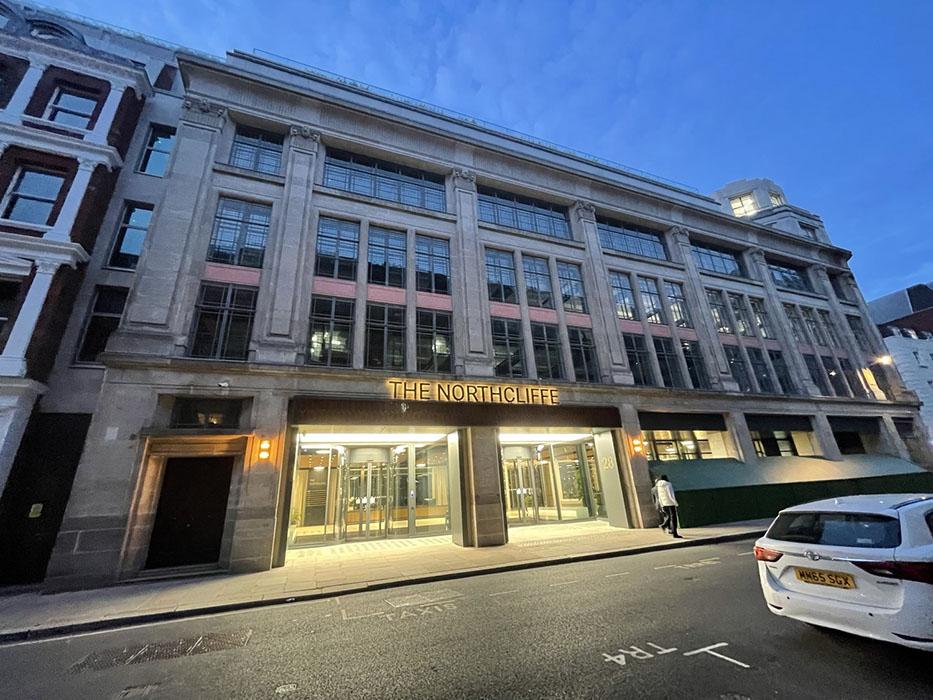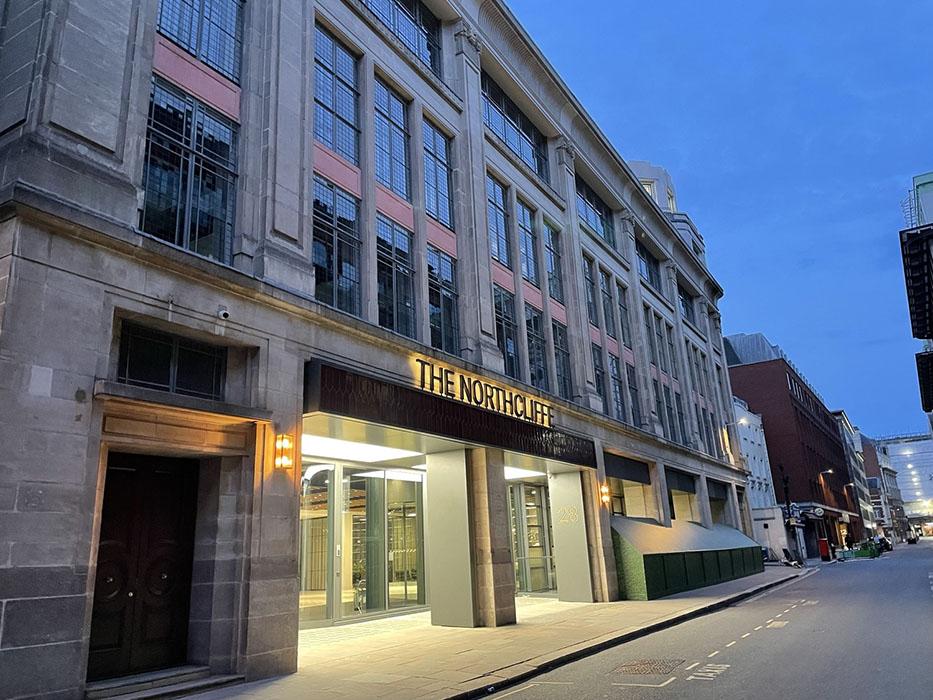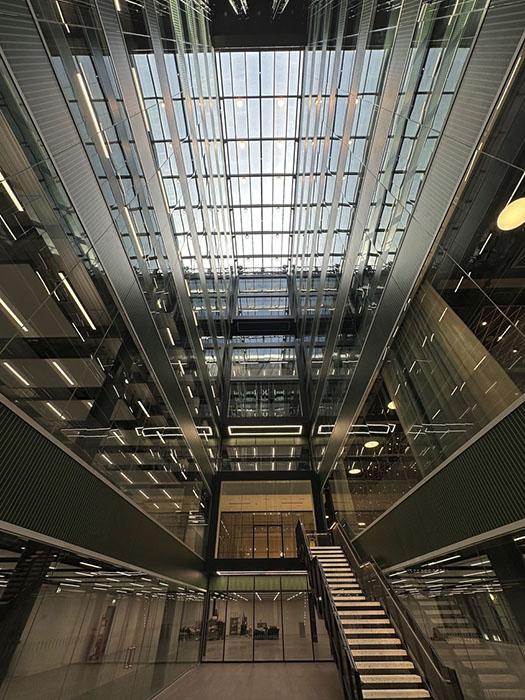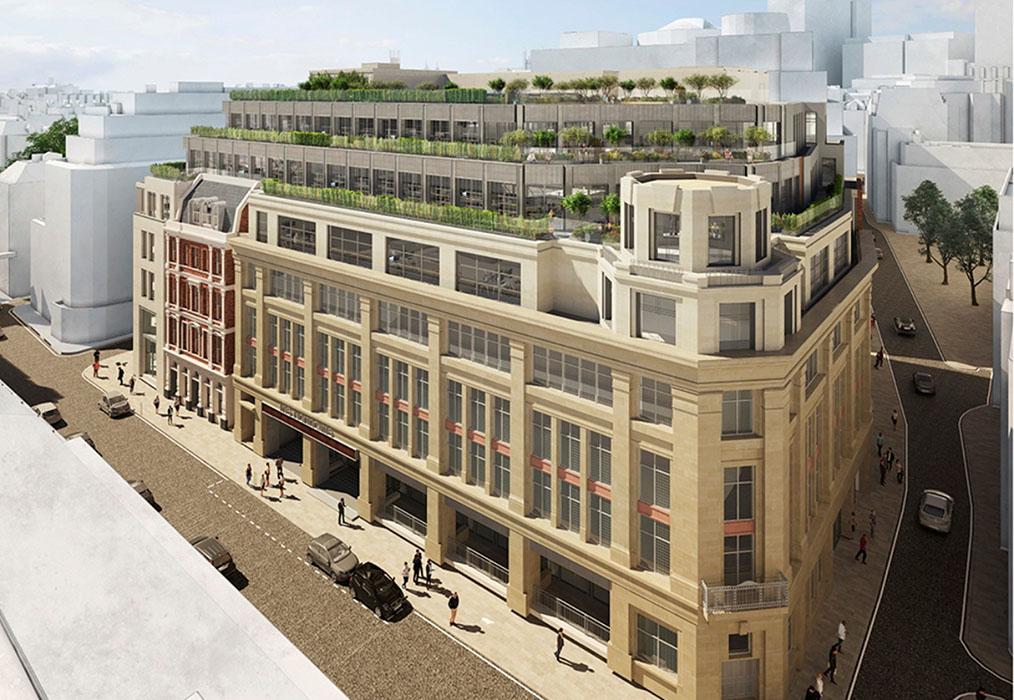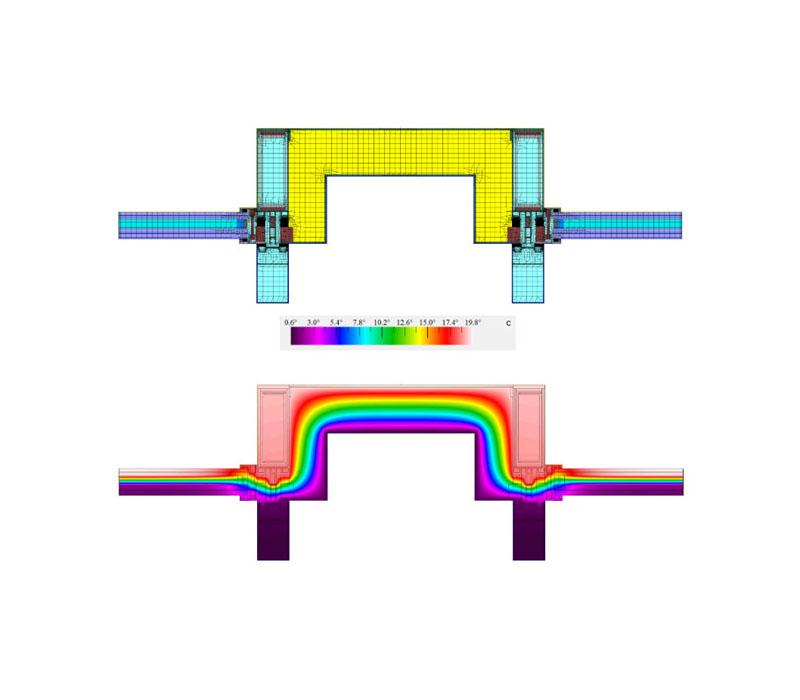Northcliffe House
Originally serving as a print and production facility, this historic structure now offers Grade A workspace behind its newly cleaned and repaired brick and stone Victorian façade.
Lead Contact

Project Details
CIBSE Project of the Year – UK Sustainability, 2024
Overview
Located within the Whitefriars Conservation Area in London, the historic Northcliffe House originally served as a print and production facility and has since been reimagined by John Robertson Architects (JRA) to offer 17,345 m² of Grade A workspace. The building features large floor plates that overlook a light-filled central atrium with collaborative work areas.
We provided facade engineering services for the project. The Grade II listed façade was designed by Ellis and Clarke in 1925. The structure was built using a cast steel framework, with the external elements encased in concrete to support the walls and secure the fixings for the precast panels made of ‘Atlas White’ Portland cement stone. These panels feature decorative elements in the then-fashionable neo-Egyptian style and Crittall’s sleek W20-section galvanized steel windows with copper-lite glazing. With JRA, we decided to retain the existing building fabric to reduce embodied carbon and upgrade the façade performance to meet current industry standards as required. The retrofit includes 40 m² of solar panels and 910 m² of landscaped terraces that contributed to the BREEAM ‘Outstanding’ certified rating.
Highlights
- A key challenge was achieving regulatory compliance within the constraints of an existing building. The existing Grade II-listed facade presented particular challenges in terms of thermal upgrades, requiring careful detailing and innovative solutions.
- The Crittall windows with copperlight subdivisions were retained and enhanced. The internal linings have been stripped, and the thermal performance is improved by introducing secondary glazing. This was detailed carefully to minimise visual disruption and enhance the interior aesthetic.
- The design of the new upper-level facade drew inspiration from the original windows, creating a unified aesthetic across different eras of the building’s history.
- The major challenge of the façade design was the interfaces inside the internal atrium and achieving a seamless and adaptable interface between the new and existing atrium facades, which allows for the complicated joints and junctions between the various façade systems.

